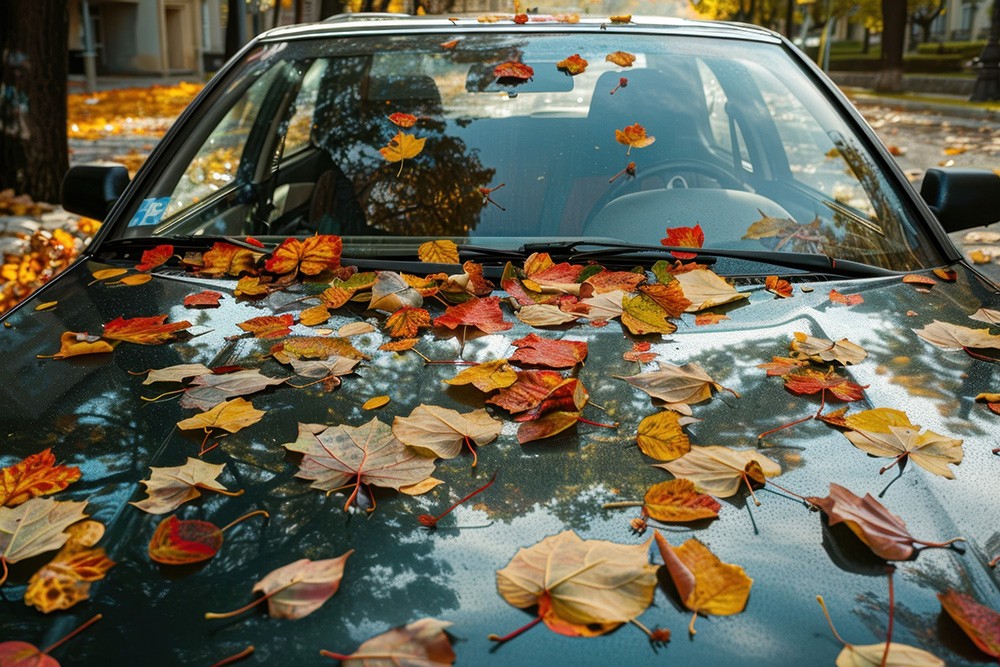
As the leaves begin to change and the air grows cooler, autumn ushers in a season of change for your vehicle, too.
Unpredictable weather like misty mornings, sudden rain or snow showers, and heavy downpours can affect drivers’ visibility when behind the wheel. And as the days become shorter and the nights longer, driving in the dark becomes frequent, making vehicle visibility even more important.
Whether you're planning a scenic drive to admire the fall foliage or simply commuting to work, here are some tips to help you navigate the road more clearly, ensuring your autumn journeys are both safe and enjoyable.
Be sure to talk to your mechanic about these additional maintenance items to ensure optimal visibility when driving.
Tips for optimal visibility when driving:
- Check the headlight alignment: Have your mechanic check the alignment of your car’s headlights. Potholes encountered during summer can throw off headlight beams. Have both regular and high beams checked out to make sure they are directed at the proper angle.
- Replace dim or burned-out bulbs: As traditional bulbs age, they tend to emit less light. Regularly check and replace any dim or burned-out bulbs to maintain proper illumination.
- Inspect LED headlights for damage or flicker. Clean LED headlight lenses frequently this autumn to maintain brightness and visibility.
- Replace worn wiper blades: Wiper blades are your first line of defense against keeping your windshield clean for optimal visibility. If wipers leave streaks on your windshield or make unusual noises, it's time for a replacement.
- Inspect for cracks and chips: Examine your windshield for any cracks or chips that could compromise your visibility. Temperature changes can exacerbate these issues, leading to further damage. If you see a small crack, get it fixed immediately before the problem worsens. Onset of cold weather can cause cracks to spread.
- Replace washer fluid regularly: Using old or dirty washer fluid can leave residue on the windshield, affecting the performance of your wiper blades. Regularly replace your washer fluid when you bring your car in for its regular maintenance.
- Restore cloudy headlights: Over time, headlight lenses can become yellowed or foggy. Have your mechanic clean or restore them to like new again. Or if they are damaged, ask about lens replacement.
Other vehicle maintenance tips for safe autumn adventure:
- Check brake performance and wear: Summer driving places a lot of strain on your brake system. Heat wears down brake pads quickly. Get a brake inspection before your autumn outings, especially if you are planning to venture along winding, wet or icy roads.
- Install a new set of tires: Rubber wears down quickly on hot road surfaces and sustain damage on backcountry, pot-holed roads. Do your tires exhibit any sign of unusual wear (spots, inner or outer edges), bulges or cuts? If so, you may need a new set of treads before winter weather comes in earnest.
- Measure tire inflation: Make sure your mechanic inspects vehicle tires for proper tread depth and tire pressure. As temperatures drop, tire pressure tends to decrease, which affects fuel efficiency and handling. Consider switching to winter tires if you live in an area with cold weather and snow.
- Test your car’s battery: Ask your mechanic to test your car battery's health and ensure it's holding a strong charge. Extreme summer heat can lead to several different battery issues in fall such as corrosion and accelerated sulfation, which leads to battery failure. Plus, cold temperatures can reduce a battery's efficiency, so it's important to have a battery that's in good condition as winter approaches.
- Check heating and defrosting systems: Get your vehicle's heating and defrosting systems tested to ensure they're working properly. This is crucial for maintaining clear visibility and comfort during colder months.
- Inspect the exhaust system: Get your exhaust system checked for any leaks or damage. Carbon monoxide leaks can be especially dangerous during cold weather when windows are often closed.
- Change the cabin air filter: Keep your cabin clean and reduce allergens by replacing cabin air filters regularly. It’s an inexpensive way to improve cabin health for everyone in the car.
- Spot-check engine belts: Have your car’s engine belts checked for any signs of wear, fraying, and cracks. Similar to other rubber-based components, over time belts wear down, especially with long exposure to extreme heat.
Copyright © 2024 by Sensible Driver. All rights reserved.